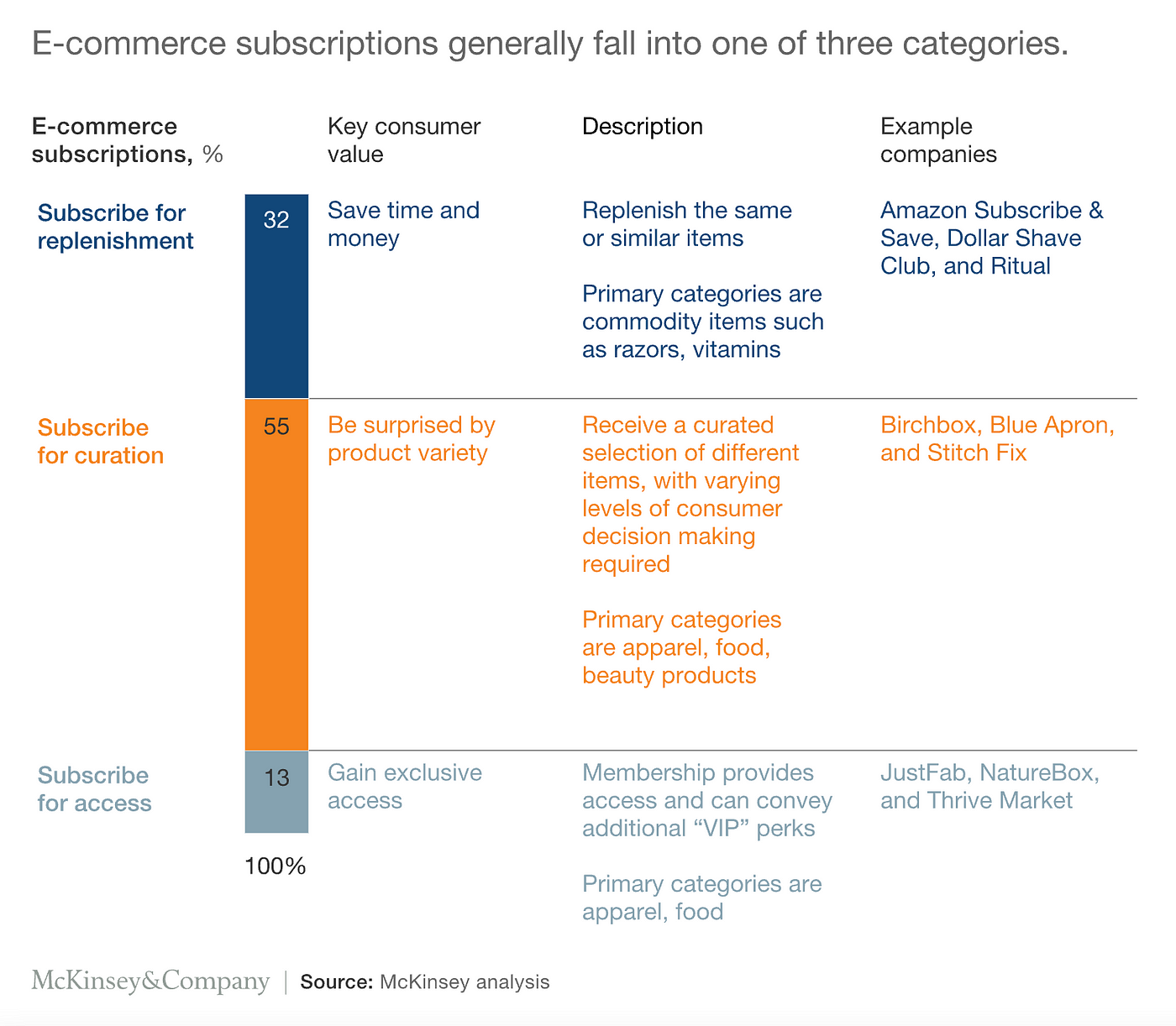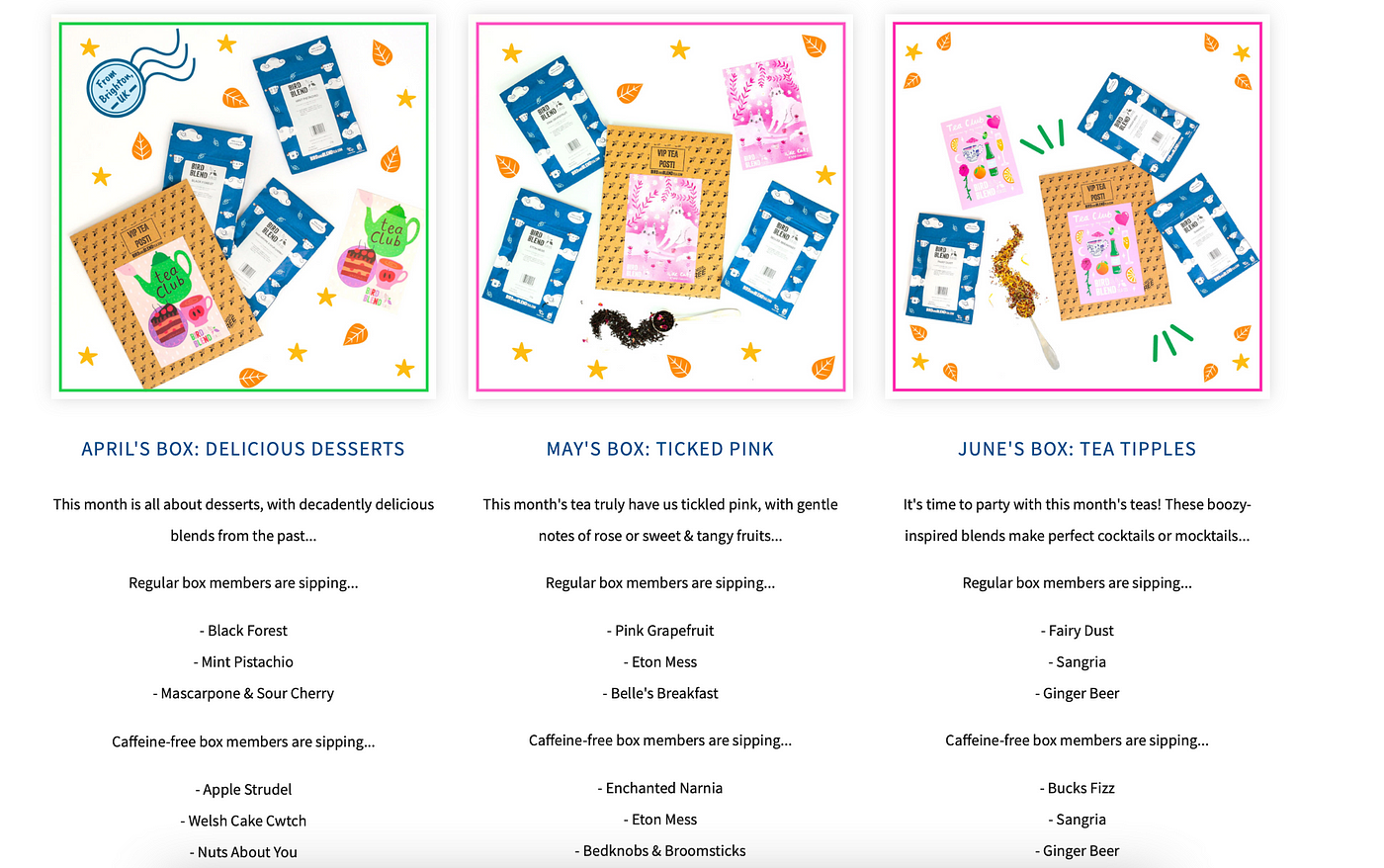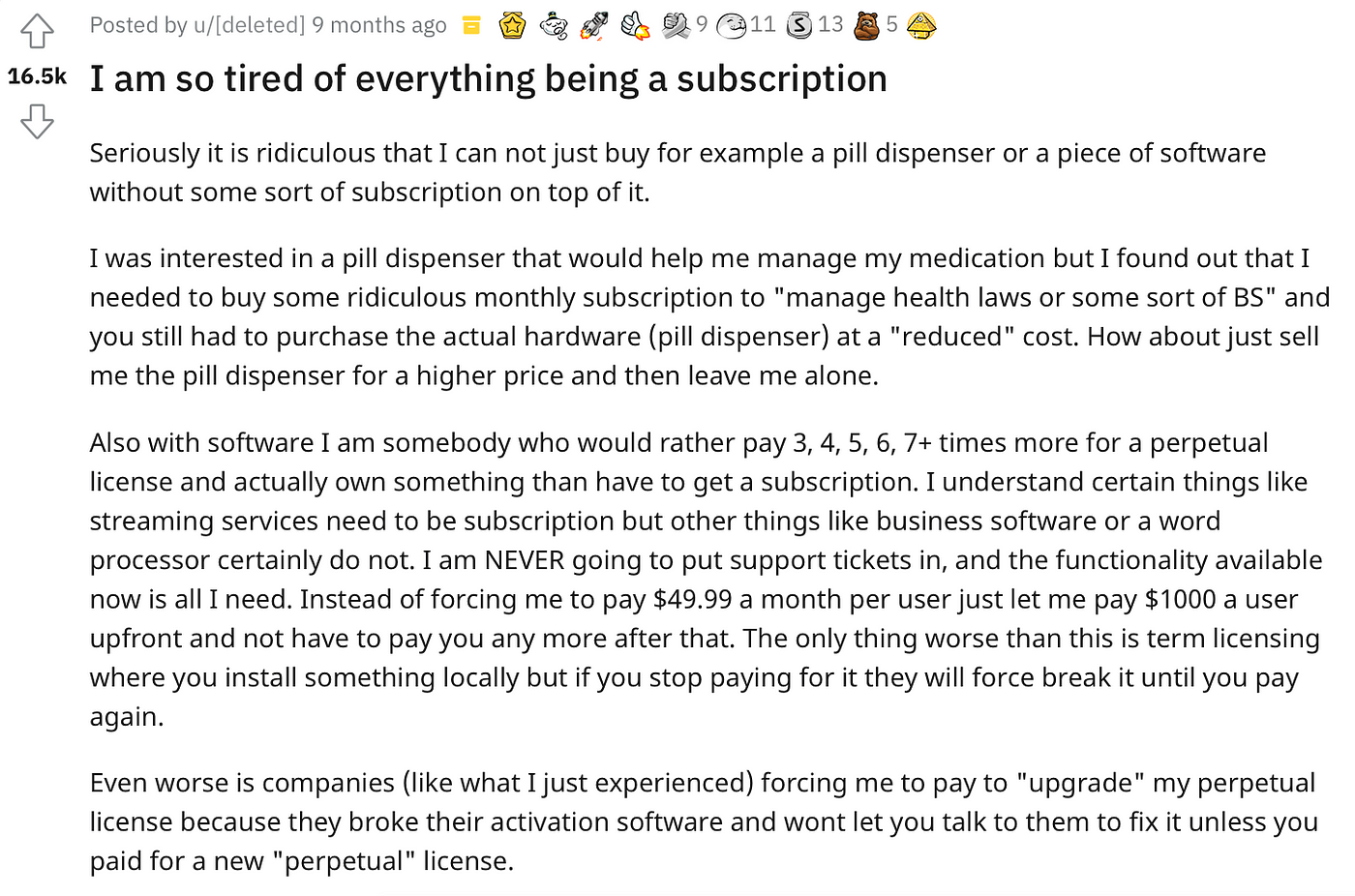Different types of subscription models and the strategy behind them
The idea of subscriptions has been around for a while, before the digital era we live in today it could have been subscribing to a magazine, by filling out a paper form and posting that off in the mail. There is nothing new with the concept of subscriptions but in the last 10 or so years, the popularity of it has exploded. Now you can get a subscription for anything, food, drink, games, entertainment, pet food, gym, transport, even toilet roll.

There is nothing wrong with subscriptions, and this story is not going to try and sway you in favour or against it, only talk about why subscriptions work and where it falls short.
A good place to start is to look at the types of subscriptions. McKinsey & Company suggests in their 2018 research that subscriptions can be broken down into 3 categories:
- Subscribe for replenishment — this could be for shaving, toilet roll or other items that are regularly needed
- Subscribe for curation — this could be to receive a curated selection of items like food, beauty products or drinks
- Subscribe for access — such as a membership or VIP access with additional perks

What does the subscription achieve?
Now that we know the different types of subscriptions it then needs to have an appeal as to why someone should subscribe. There needs to be a reason that compels the person to understand the value of the subscription. We can break this down into 2 categories
- There is a rational value, this could be because of cost, convenience and/or incentives & rewards
- There is an emotional value, this could be because of identity, community and/or experience
Subscriptions can reduce the hassle of remembering to buy or renew things, they can also reduce the time it takes to go to a website, login, add your items to the basket, checkout, rinse and repeat every month. Instead, it’s done for you, automatically, every month.
This convenience to the customer also benefits the business. It removes that exchange of needing to remember to buy your monthly pass to your favourite entertainment platform, it just magically works every day. You forget about it and by forgetting about it you also forget about the cost.
A different cognitive bias says that paying for something in physical cash feels like you are losing more than if you pay with a credit card. This is phenomenon is known as ‘the pain of paying’ first theorised by Ofer Zelermayer in 1996. That pain we feel is connected to a cognitive bias called loss-aversion, we fear losing more than we appreciate gaining.
Subscriptions take this one step further, where you don’t need to do anything, you enter once and then forget about it.
Subscriptions give both the customer and the business a sense of predictability. For example, if you have a favourite go-to coffee that you have day-in day-out and you went into a store and found it was out of stock you’d feel disappointed, perhaps annoyed. Subscriptions remove this feeling, you know that every month, without fault you can tell a company I want this amount of coffee delivered to my door.

For businesses, this is also a benefit, by having this future knowledge that this customer will be ordering this type of coffee, every couple of weeks they can then make sure they have the stock to meet the demand where it is needed.
But tastes change, so as well as being predictable, it is also important that the customer is in control of what they order and have the ability to change what they are ordering.
Who doesn’t love a gift, even if it’s to yourself? Subscriptions can be fun, interesting, and perhaps opposite to what we just looked at not so predictable.
That anticipation and that excitement of knowing that your monthly subscription of fancy chocolates or a collection of sample teas from around the world is out for delivery can be a great pick-me-up and make a difference from day-to-day living.

Brands can really make a difference in this space of making subscriptions unique, whether that be the unboxing experience or putting an extra gift in the package. Not subscription related, but a company I brought from before put 20 or so mini-packet of sweets in the delivery, I didn’t expect it but it was a nice touch that I still remember them for till this day. Apple is also well known for it’s unboxing experiences with plenty of videos online about that.
One of the benefits to the customer of subscription models, in particular software providers, is that by offering a subscription model you are reducing the upfront cost making it less of a barrier for a potential customer to use the product. An example is that instead of charging an upfront payment of £300 for a professional piece of software you can charge £25 fixed-fee for 12 months. The benefit for the business is that they can then be more appealing to a range of customers as they have reduced that barrier.

John Gourville in 1998 looked at the effect of temporal reframing on transaction. From the abstract it says:
To increase transaction compliance, marketers sometimes temporally reframe the cost of a product from an aggregate one-time expense to a series of small ongoing expenses, often in spite of the fact that the physical payments remain aggregated. This temporal reframing is identified in this article as the “pennies-a-day” (PAD) strategy.
One common use of this reframing is newspapers. As you can see above this newspaper brand is advertising a digital subscription to the news. What they have done with the pricing structure is that they know people read newspapers daily, they are used to paying for their newspaper daily, so in order for people to compare value for money they have framed the cost being £0.86 daily.
However, read beneath the bright orange call to action they then say that you will be charged monthly at £26. Either way, it is the same cost but it is more relatable and on appearance better value for money presented in pennies-a-day.
There is a thing called The Goldilocks Principle, which talks about the idea that in general people will go for the median option when presented with choice. One of the funny things that happen when we have to make a choice is that often we don’t know what we actually need. So by going for the middle option you feel like you are getting value for money and aren’t losing out that much.
There are those people who do know what they need, or they are on a budget and maybe go for a cheaper tier or there are some users who will choose the higher option as they have bespoke needs.
You will often see businesses highlighting their middle option as the most attractive option.
A good subscription model offers both annual and monthly billing but quite often subscriptions only offer one or the other. In fact a recent study showed that only 20% of Software as a service (SaaS) companies offer both annual and monthly plans.
User behaviour does tend to differ depending on what a user selects though. For example, someone who decides to pay upfront for a 12-month subscription is likely to be very active at the start of the subscription as they have just pay a lot of money and feel like they need to get value for money. But towards the end of their subscription, they may be less active as they forget about the upfront cost and the “pain” of losing the money.
Whilst a monthly subscriber tends to be active throughout their subscription as they are constantly reminded that they are subscribe when they get charged.
As the first image showed, yes people are! There is a need for subscriptions, but people are becoming more aware of the true value of what that subscription provides and are starting to feel like they don’t own anything.

Particularly things like software and physical items people are feeling the pinch of subscriptions and companies are becoming aware of this with their competitors offering one-off purchases to undercut the market leaders.
In fact, in the UK it was recently reported that over 1.2 million subscription payments have been cancelled since the summer of 2021 as people struggle with the cost of living increases. Almost half of those cancelled were from media streaming services. It is not a surprise though as research done in 2020 showed that the UK spend £25 billion each year for subscriptions they don’t use or want, according to NatWest.
A different set of research conducted by Muso has suggested that we may have reached the peak of subscriptions. Particularly in the streaming industry, competition has escalated with every big-named media company releasing their own type of subscription on-top of the traditional cable TV it is a very competitive market.
Subscriptions are almost never going to go back to how they were 10 years ago, but people will become more savvy about where and what they subscribe too and want to see value for money.